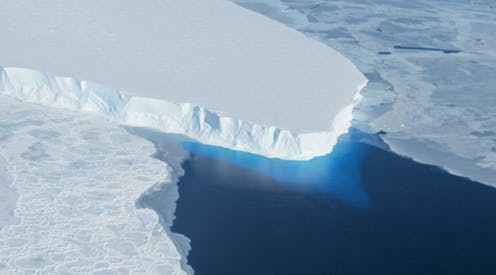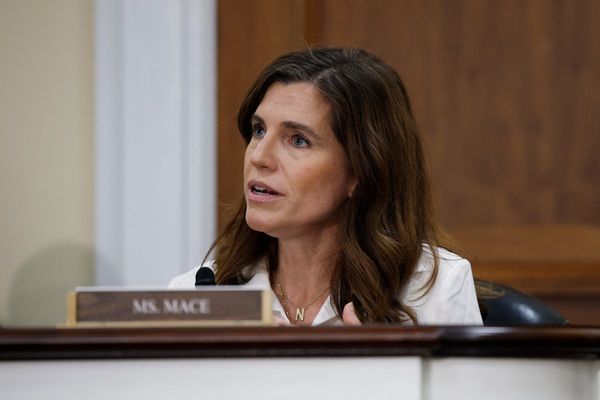
This episode of The Conversation Weekly podcast is about the Thwaites Glacier in Antarctica. Thwaites is among the largest glaciers on Earth and one of the single most important factors for future global sea level rise. We talk to three experts about what makes Thwaites so uniquely significant, why it’s melting and the creative techniques scientists are using to study it.
Thanks to climate change, ice all over the world is melting. Greenland, the Arctic the Himalayas and Antarctica are all experiencing the fastest melting in recorded history.
As ice that is currently sitting on land melts, it flows downhill and eventually reaches the ocean. If the ice melts faster than snow replenishes the glaciers, sea level rises.
The Thwaites Glacier is one of many bodies of ice that are melting, but this massive, Antarctic glacier is uniquely important when it comes to sea level rise. “We’re talking about an area that’s the size of the island of Great Britain,” says Ted Scambos, a glacier scientist at the University of Colorado in the US and the principal investigator of the Science Coordination Office of the International Thwaites Glacier Collaboration.
If – or when – the entire Thwaites Glacier melts, Scambos says it will result in around 0.6 meters of sea level rise. But the interior section of Thwaites is surrounded by other massive ice sheets that cover west Antarctica. And since Thwaites sits in a giant, low elevation basin, if it melts, the rest of the ice will flow into the basin and melt, too. Add all that ice up and you get more than three meters of sea level rise.
What makes Thwaites such a significant contributor to sea level rise is where it sits on the continent of Antarctica. It’s shaped sort of like a lollipop with the candy part sitting in a giant basin and the stick extending out from the continent to the ocean. And that stick is melting quickly.
Read more: Ice world: Antarctica's riskiest glacier is under assault from below and losing its grip
Yixi Zheng is an oceanographer at the University of East Anglia in England and has recently been down to Antarctica to study how Thwaites is melting. She describes the scene in visceral terms. “You can really see the icebergs and the glaciers and they are melting. You can see the water dripping from the glaciers,” she tells us. “We get really emotional. They were pretty much crying.”
Paul Holland, an ocean and ice scientist with the British Antarctic Survey, has been looking at why the ice is melting, focusing on changes to the winds that bring warmer water down to the Amundsen Sea next to Thwaites. “The question is, if we reverse these greenhouse gas induced wind changes, what effect does that have? What’s going to happen to the ice sheet? Will it regrow or will it take many centuries to stabilise and then it might regrow?” says Holland. Thanks to his work and the work of researchers like Zheng and Scambos, scientists are starting to find the answers.
Listen to the full episode to hear how Thwaites’ unique shape makes it so scary, what researchers know about why it’s melting now and how seals are helping collect data on the glacier in places no human could ever go.
This episode was produced by Mend Mariwany, with sound design by Eloise Stevens. The executive producer was Gemma Ware. Our theme music is by Neeta Sarl. Sound of seals snoring in this episode from Nick Roden, and ice cubes from Idalize via Freesound.
You can find us on Twitter @TC_Audio, on Instagram at theconversationdotcom or via email. You can also sign up to The Conversation’s free daily email here. A transcript of this episode will be available shortly.
You can listen to The Conversation Weekly via any of the apps listed above, download it directly via our RSS feed, or find out how else to listen here.
Ted Scambos receives funding from the National Science Foundation and NASA.
Paul Holland holds an honorary professorship with the University of Bristol. He has received funding from the UK Natural Environment Research Council and the EU Horizon programme. Yixi Zheng has received funding from the China Scholarship Council, UK Research and Innovation, the European Research Council and the US National Science Foundation.
This article was originally published on The Conversation. Read the original article.







